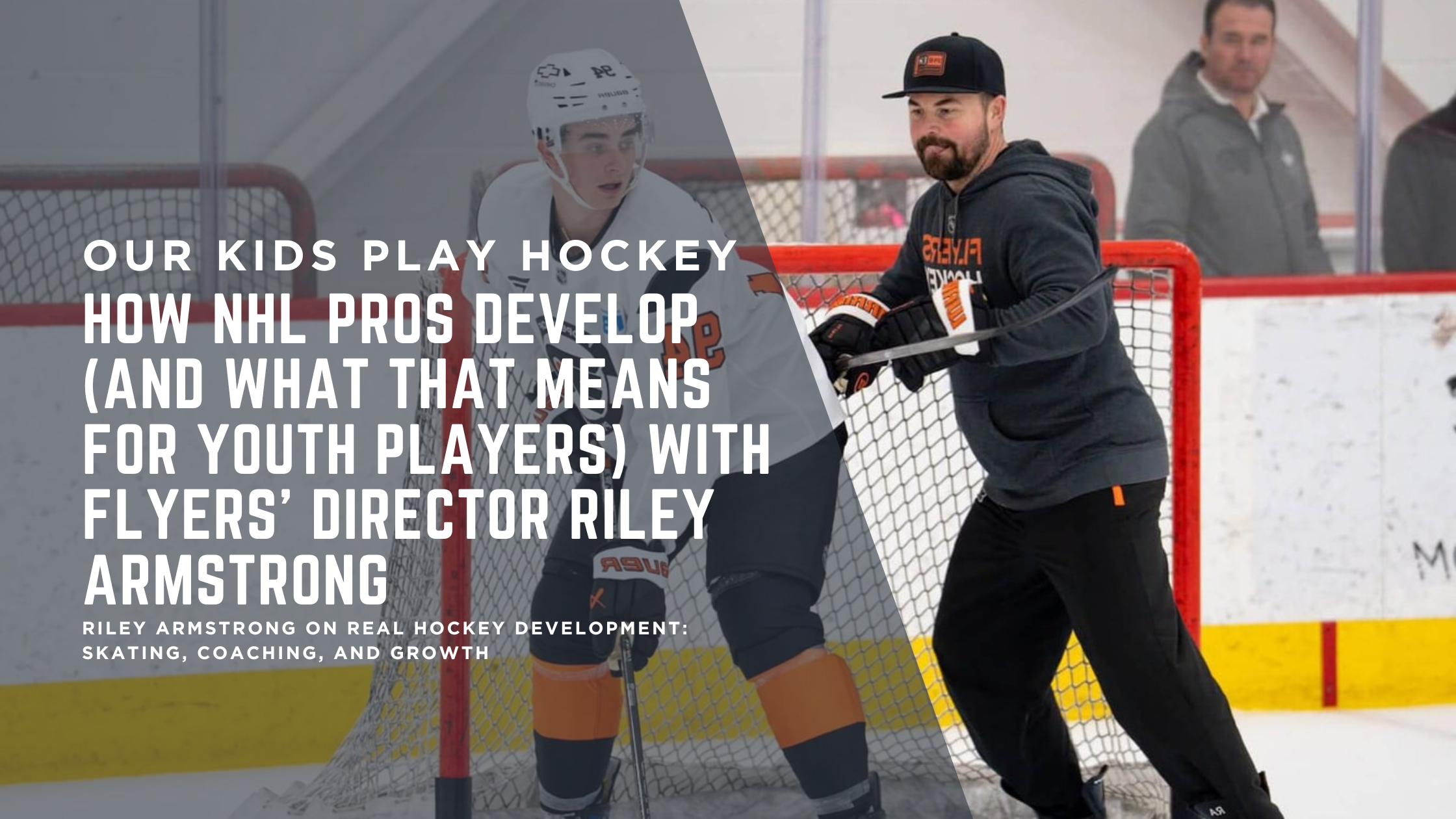How NHL Pros Develop (And What That Means for Youth Players) with Flyers' Director Riley Armstrong

🏒 Introduction: Why “Development” Means More Than You Think
Every hockey parent has heard it: “It’s all about development.”
But what does that actually mean? For Riley Armstrong, Director of Player Development for the Philadelphia Flyers, it’s not about chasing rankings or piling on tournaments. It’s about investing time — not just money — in the right things.
In a powerful episode of Our Kids Play Hockey, Riley shared insights that every hockey family needs to hear — from why figure skating builds better hockey players to why burnout begins long before a player ever reaches college.
👟 The Skating Foundation: Why Every Player Should “Figure Skate”
Riley’s first teacher was his mom — a lifelong figure skating and power skating coach. He credits her influence for everything that came after.
“It’s hard for a young boy to put on figure skates, but that’s where I learned how to really move,” Riley said.
Learning edges, balance, and body control from figure skating built a foundation that carried him from the WHL to the NHL. His advice to parents? Don’t underestimate the fundamentals. Skating — not tournaments, not equipment — is the true difference maker.
💸 The Real Investment: Stop Chasing Tournaments
Riley doesn’t mince words about where parents should focus their resources:
“If I had to choose, I’d invest in power skating, not another weekend in Las Vegas.”
Beyond finances, it’s about time. Kids (and parents) need breaks. Development comes from focused, consistent training — not endless games. The pros understand this instinctively. Youth families should too.
⏳ The Window of Opportunity
Every player, pro or youth, gets a window — a few years to show what they can do. For pros, that’s a contract cycle. For kids, it’s their formative seasons.
The takeaway? Players who work on skating, strength, and athleticism in the offseason are the ones who separate themselves. Multi-sport athletes often progress faster, because diverse movement builds better hockey players — and happier ones.
🎵 Rhythm, Music, and Making It Fun Again
Perhaps the most surprising insight from Armstrong was how he keeps kids engaged: with music.
At his youth practices, he uses a rhythm-based skating program to teach stride timing. The music creates flow and takes away the “drill” feeling — transforming practice into play.
Because when it’s fun, kids stay. And when kids stay, they get better.
🚩 Red Flags in Youth Hockey
Riley calls it like he sees it: too many kids are chasing teams instead of coaching.
“If your kid’s been on eight teams in eight years, that’s a red flag,” he said.
The best families look for great teachers, not great records. A strong coach can shape a player for life — even if the team doesn’t win every game.
💬 Coaching for the Future
Youth coaches, Armstrong reminds us, aren’t just coaching today’s team — they’re coaching who those players will become next year.
Development means teaching skills, habits, and confidence that last beyond one season. Winning is wonderful, but true success is a player who loves the game enough to keep coming back.
🏁 Conclusion: The Real Goal
Whether you’re a hockey parent, a youth coach, or a young player with NHL dreams, Riley Armstrong’s message is clear: real development is slow, steady, and deeply personal.
It’s not about rankings, travel teams, or highlight reels. It’s about learning to move — on your edges, in your body, and through the ups and downs of the game.
Keep it fun. Keep it focused. And keep skating forward.


